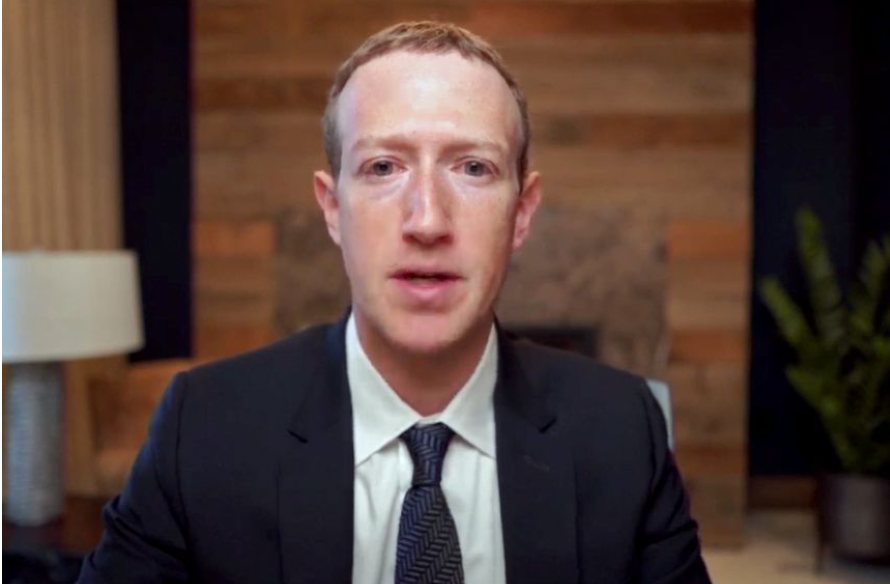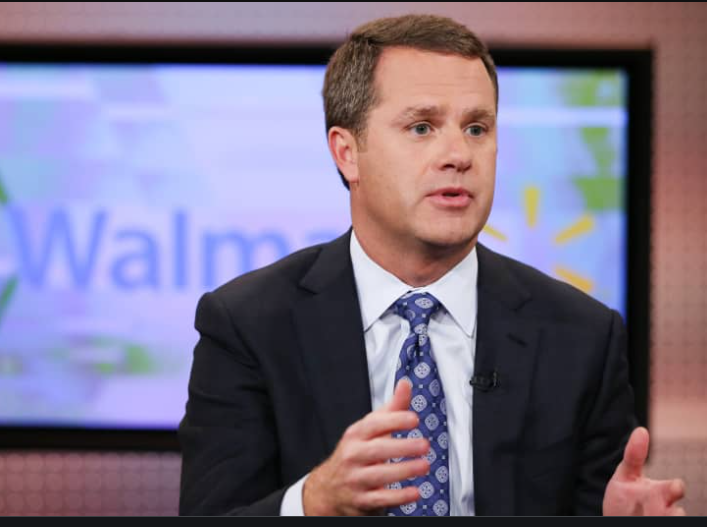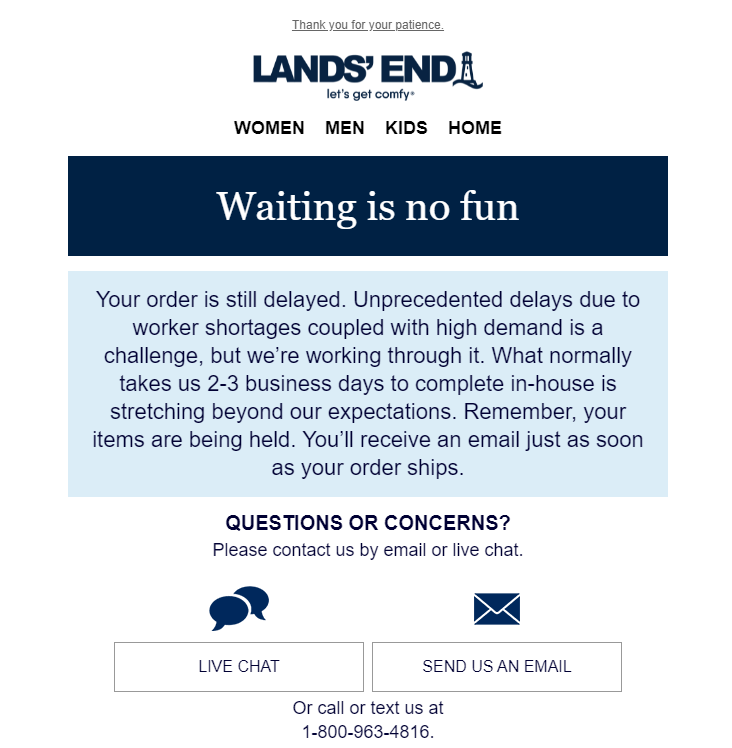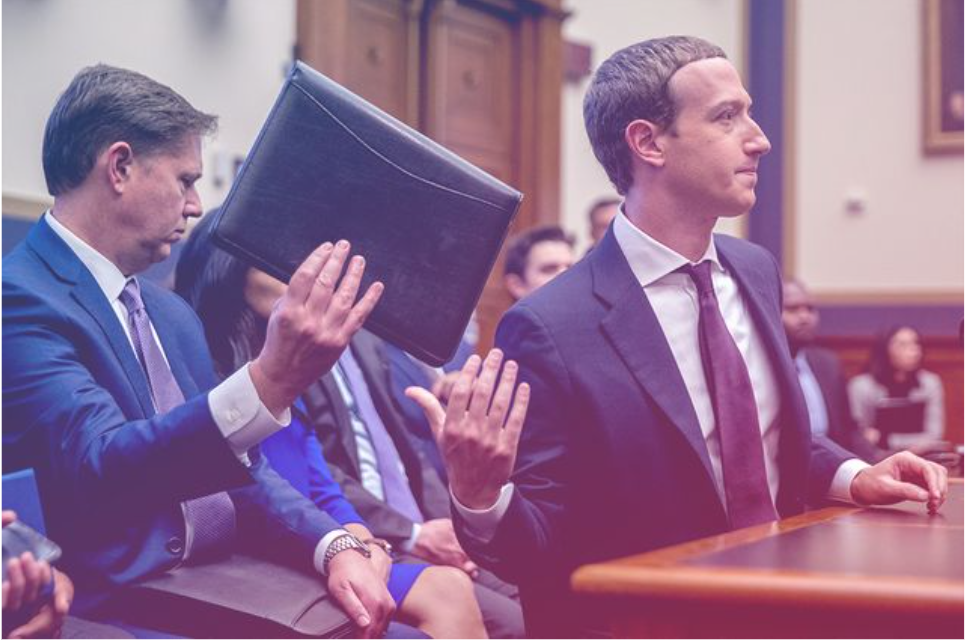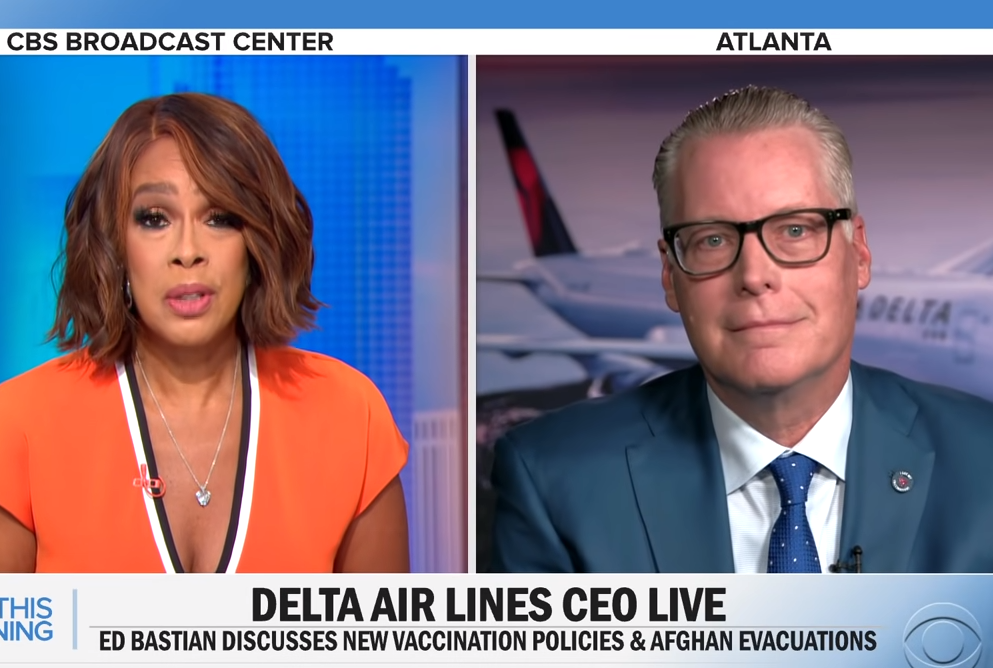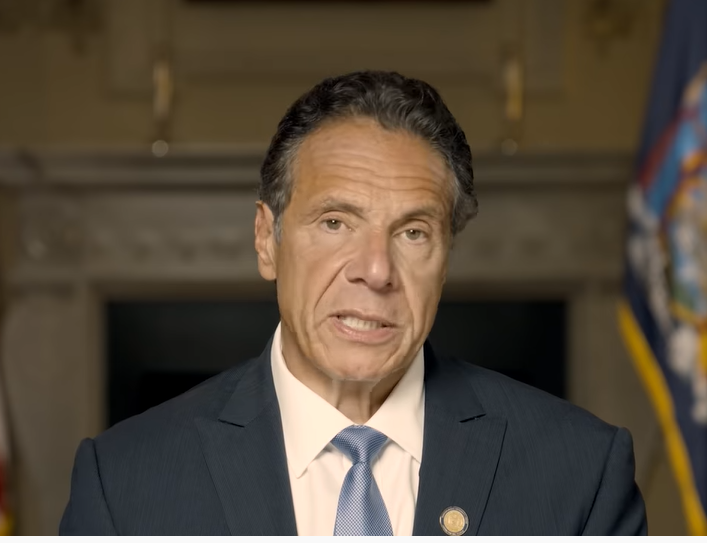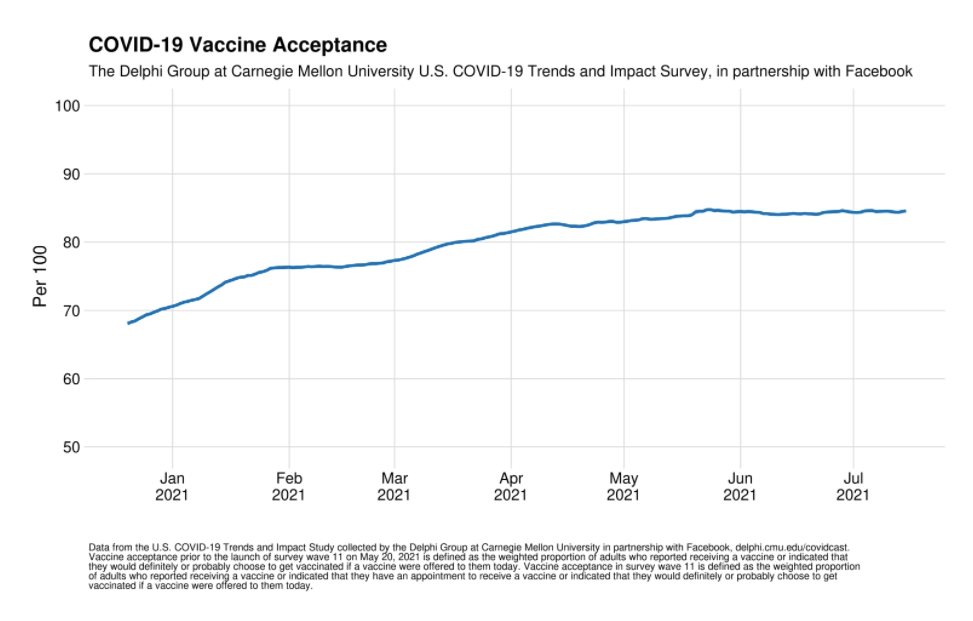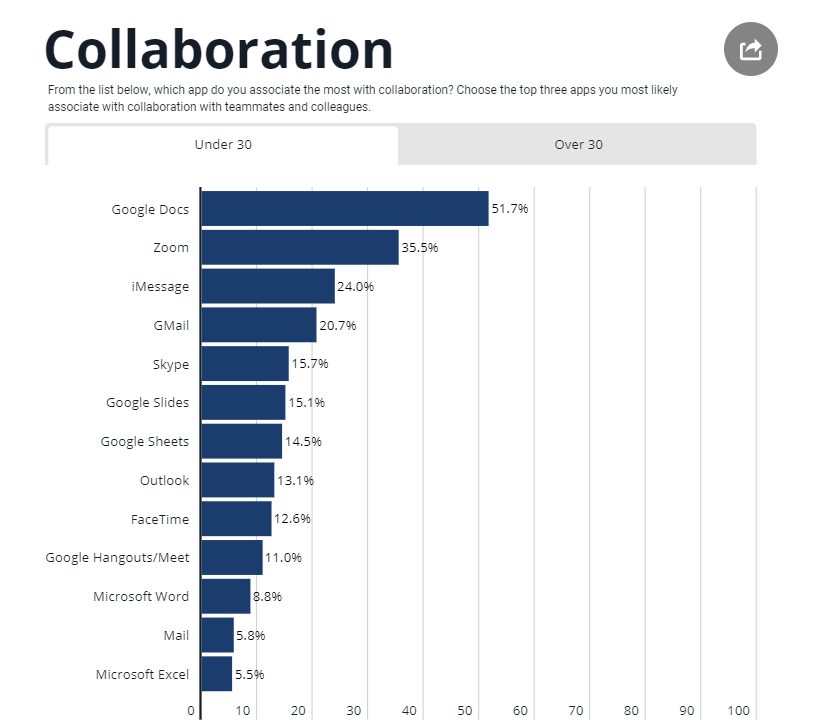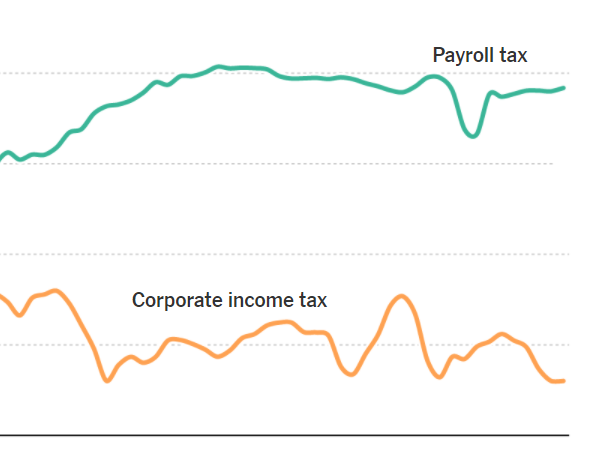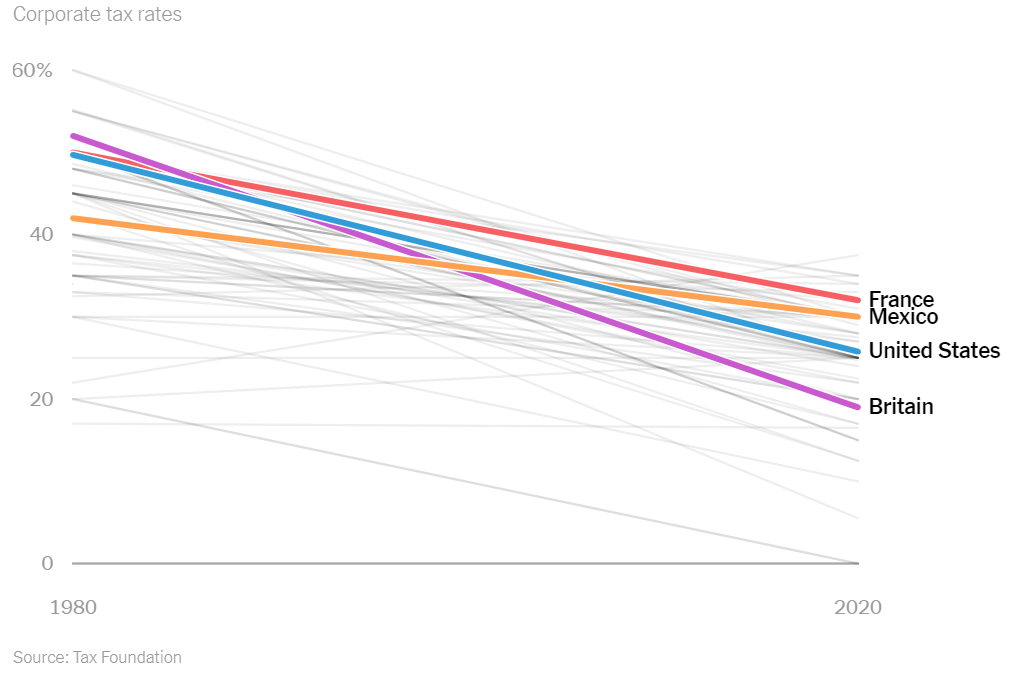Raiders Coach’s Language and Resignation
The New York Times described emails sent by Raiders Coach Jon Gruden that included racist, homophobic, and sexist language. In his statement, Gruden wrote a short statement on the Raiders’ Twitter account.
The statement isn’t exactly an apology, as we define it in business and corporate communication. Gruden doesn’t describe his behavior or the impact on others.
Raiders owner Mark Davis wrote an even shorter statement: “I have accepted Jon Gruden’s resignation as Head Coach of the Las Vegas Raiders.”
Critics of the decision evoke the “cancel culture,” while others believe Gruden’s comments were outlandish. In a business environment, his language would never be acceptable. The NY Times article quotes Gruden, which I’ll avoid here.
Mark Zuckerberg Addresses Controversy
After weeks of The Wall Street Journal’s posting internal documents criticizing Facebook, CEO Mark Zuckerberg is finally speaking out. The whistleblower, a former Facebook product manager, released the documents, and now the company is participating in U.S. senate hearings to defend its practices. In a Facebook post and in his testimony via video on Capital Hill, Zuckerberg addresses several issues plaguing the company.
First, in his post, which is a copy of an email he sent to employees, Zuckerberg addresses the hours of outages that made Facebook, Instagram, What’sapp, and Messenger inaccessible around the world. Second, he addresses the testimony and defends the company’s policies and practices. Claiming that their work is “mischaracterized,” Zuckerberg denies that teens are negatively affected by their apps as the reports have portrayed.
The post is a study in persuasive communication. He uses a mix of emotional appeal and credibility. Including his hopes for his own children, Zuckerberg presents himself as a concerned, yet confident, parent, reassuring us that all is OK. He cites research and reporting—and transparency—yet the reports uncovered have not been public, and previous testimony contradicts some of the conclusions drawn in internal documents.
Zuckerberg also uses logical arguments, for example, that more teenaged girls who are struggling find the apps helpful. He neglects saying that any percentage find them harmful. With a cursory mention—”It is incredibly sad to think of a young person in a moment of distress who, instead of being comforted, has their experience made worse”—Zuckerberg tries to isolate one case, a classic crisis communication strategy, as though that might be the only one. However, the title of one Facebook report page reads, “1 in 5 teens say that Instagram makes them feel worse about themselves, with UK girls the most negative.” Clearly, he is downplaying his own data.
Mark Zuckerberg
I wanted to share a note I wrote to everyone at our company.
---
Hey everyone: it's been quite a week, and I wanted to share some thoughts with all of you.
First, the SEV that took down all our services yesterday was the worst outage we've had in years. We've spent the past 24 hours debriefing how we can strengthen our systems against this kind of failure. This was also a reminder of how much our work matters to people. The deeper concern with an outage like this isn't how many people switch to competitive services or how much money we lose, but what it means for the people who rely on our services to communicate with loved ones, run their businesses, or support their communities.
Second, now that today's testimony is over, I wanted to reflect on the public debate we're in. I'm sure many of you have found the recent coverage hard to read because it just doesn't reflect the company we know. We care deeply about issues like safety, well-being and mental health. It's difficult to see coverage that misrepresents our work and our motives. At the most basic level, I think most of us just don't recognize the false picture of the company that is being painted.
Many of the claims don't make any sense. If we wanted to ignore research, why would we create an industry-leading research program to understand these important issues in the first place? If we didn't care about fighting harmful content, then why would we employ so many more people dedicated to this than any other company in our space -- even ones larger than us? If we wanted to hide our results, why would we have established an industry-leading standard for transparency and reporting on what we're doing? And if social media were as responsible for polarizing society as some people claim, then why are we seeing polarization increase in the US while it stays flat or declines in many countries with just as heavy use of social media around the world?
At the heart of these accusations is this idea that we prioritize profit over safety and well-being. That's just not true. For example, one move that has been called into question is when we introduced the Meaningful Social Interactions change to News Feed. This change showed fewer viral videos and more content from friends and family -- which we did knowing it would mean people spent less time on Facebook, but that research suggested it was the right thing for people's well-being. Is that something a company focused on profits over people would do?
The argument that we deliberately push content that makes people angry for profit is deeply illogical. We make money from ads, and advertisers consistently tell us they don't want their ads next to harmful or angry content. And I don't know any tech company that sets out to build products that make people angry or depressed. The moral, business and product incentives all point in the opposite direction.
But of everything published, I'm particularly focused on the questions raised about our work with kids. I've spent a lot of time reflecting on the kinds of experiences I want my kids and others to have online, and it's very important to me that everything we build is safe and good for kids.
The reality is that young people use technology. Think about how many school-age kids have phones. Rather than ignoring this, technology companies should build experiences that meet their needs while also keeping them safe. We're deeply committed to doing industry-leading work in this area. A good example of this work is Messenger Kids, which is widely recognized as better and safer than alternatives.
We've also worked on bringing this kind of age-appropriate experience with parental controls for Instagram too. But given all the questions about whether this would actually be better for kids, we've paused that project to take more time to engage with experts and make sure anything we do would be helpful.
Like many of you, I found it difficult to read the mischaracterization of the research into how Instagram affects young people. As we wrote in our Newsroom post explaining this: "The research actually demonstrated that many teens we heard from feel that using Instagram helps them when they are struggling with the kinds of hard moments and issues teenagers have always faced. In fact, in 11 of 12 areas on the slide referenced by the Journal -- including serious areas like loneliness, anxiety, sadness and eating issues -- more teenage girls who said they struggled with that issue also said Instagram made those difficult times better rather than worse."
But when it comes to young people's health or well-being, every negative experience matters. It is incredibly sad to think of a young person in a moment of distress who, instead of being comforted, has their experience made worse. We have worked for years on industry-leading efforts to help people in these moments and I'm proud of the work we've done. We constantly use our research to improve this work further.
Similar to balancing other social issues, I don't believe private companies should make all of the decisions on their own. That's why we have advocated for updated internet regulations for several years now. I have testified in Congress multiple times and asked them to update these regulations. I've written op-eds outlining the areas of regulation we think are most important related to elections, harmful content, privacy, and competition.
We're committed to doing the best work we can, but at some level the right body to assess tradeoffs between social equities is our democratically elected Congress. For example, what is the right age for teens to be able to use internet services? How should internet services verify people's ages? And how should companies balance teens' privacy while giving parents visibility into their activity?
If we're going to have an informed conversation about the effects of social media on young people, it's important to start with a full picture. We're committed to doing more research ourselves and making more research publicly available.
That said, I'm worried about the incentives that are being set here. We have an industry-leading research program so that we can identify important issues and work on them. It's disheartening to see that work taken out of context and used to construct a false narrative that we don't care. If we attack organizations making an effort to study their impact on the world, we're effectively sending the message that it's safer not to look at all, in case you find something that could be held against you. That's the conclusion other companies seem to have reached, and I think that leads to a place that would be far worse for society. Even though it might be easier for us to follow that path, we're going to keep doing research because it's the right thing to do.
I know it's frustrating to see the good work we do get mischaracterized, especially for those of you who are making important contributions across safety, integrity, research and product. But I believe that over the long term if we keep trying to do what's right and delivering experiences that improve people's lives, it will be better for our community and our business. I've asked leaders across the company to do deep dives on our work across many areas over the next few days so you can see everything that we're doing to get there.
When I reflect on our work, I think about the real impact we have on the world -- the people who can now stay in touch with their loved ones, create opportunities to support themselves, and find community. This is why billions of people love our products. I'm proud of everything we do to keep building the best social products in the world and grateful to all of you for the work you do here every day.
Corporate Vaccine Messages
Business communication students can analyze vaccine messages to compare how organizations adjust for the context and audience. Following are a few examples:
The medium companies choose is also interesting to compare.
The Society for Human Resource Management offers templates for companies—one about requiring vaccines and another about optional vaccines. How do company messages compare to these templates?
Lands’ End Bad-News Message
So many products are delayed these days. In an email to a customer, Lands’ End acknowledged further delays and blamed the issue on labor shortages and high demand. On a flight I took recently, the pilot also mentioned staffing issues (causing us to sit on the plane for a hour waiting for a gate to clear).
I like the transparency. We all know about worker shortages since the pandemic, and it seems logical to name the problem as it is. In normal times, we might see this as a company’s excuse, but the problem is so systemic that no one company can be blamed.
I also appreciate Lands’ End’s usual conversational style. Although I wish the customer were given a timeframe, at least the message is easy to understand.
Mailchimp Acquisition News
Mailchimp’s acquisition announcement is an example of a positive message. In an email and statement on the website, Co-founder and CEO Ben Chestnut reveals the news in the third paragraph. The single sentence is in bold type, but it takes a while for the reader to get the message.
Chestnut provides reasons for the acquisition in this paragraph:
Together with Intuit, we’ll deliver an innovative small business growth engine powered by marketing automation, customer relationship management, accounting and compliance, payments and expense, and e-commerce solutions, creating a single source of truth for your business. We’ll also be able to offer more personalized support and onboarding, expand our international footprint, and scale our teams to innovate faster and deliver the solutions you want and need.
Both sentences, long and jargony, use “we” as the subject. I wish he had explained the decision in more natural, conversational language written from the reader’s—”you”—perspective. Why should I care? How will the change help me manage my business, etc.?
Students could rewrite the entire message and do a better job. The message is positive—and it could be persuasive. Otherwise, it could be interpreted as bad news, not good.
Painfully Long Peloton Email
This is the second email someone sent me from Peloton CEO and Founder John Foley. Both seem much longer than they need to be. The first paragraph muses on the company success, and the second paragraph introduces the main point—the Peloton Tread. Essentially, this is a sales pitch.
CEO and Founder John Foley organizes the email around three advantages of the Peloton Tread, which are clear and easy to follow. He could use more “you” language to focus on benefits to the reader rather than features of the product. Persuasive business writing tells readers “why” they should want to do what the writer asks.
If you were advising John Foley, what other advice would you offer? Would visuals help the message? How could he reduce the length of the email to increase the chance that people will read it? Read the entire message.
Hi there,
When we founded Peloton nearly a decade ago, we dreamt of bringing high-energy boutique fitness experiences into the home through vertically integrated platforms. That’s a fancy way of saying that we wanted the hardware to be the best in the world, the software to bring the energy and connection of other people into your home, and the content to deliver the inspiration of the most motivating instructors coaching over the best music. I hope you agree that we deliver on that goal already, but I hope you also see that we continue to innovate on the software and content because we always want your experience to get better, a commitment that I made to you back then and I am making to you again today…
But today, I write to you about another platform: The Peloton Tread. Have you ever taken a bootcamp class or a HIIT total body group class or any class involving a treadmill, where the instructor asked you to step off of the treadmill for a more full-body workout? As one of the founders of Peloton, I of course LOVE a great indoor cycling class! As you might guess, so does my wife Jill. But we have found over the years that complementing the fantastic cardio provided by the Peloton App with cardio AND strength training via bootcamp classes is a perfect new part of our fitness journey.
So I wanted to take a minute to share my excitement for the Peloton Tread with you.
Stunning Trove of Facebook Internal Documents
The Wall Street Journal has uncovered internal emails, reports, and presentations that show Facebook’s communication struggles and contradictions. Some messages are in draft form and illustrate conflicts within the organization about how to manage apps and report on information. In one document, an employee wrote, “We are not actually doing what we say we do publicly.”
A document marked as attorney/client privileged, refers to a “whitelist,” which means that different standards apply to certain elite users. A WSJ writer explains the issue:
At times, the documents show, XCheck has protected public figures whose posts contain harassment or incitement to violence, violations that would typically lead to sanctions for regular users. In 2019, it allowed international soccer star Neymar to show nude photos of a woman, who had accused him of rape, to tens of millions of his fans before the content was removed by Facebook. Whitelisted accounts shared inflammatory claims that Facebook’s fact checkers deemed false, including that vaccines are deadly, that Hillary Clinton had covered up “pedophile rings,” and that then-President Donald Trump had called all refugees seeking asylum “animals,” according to the documents.
Other documents provide research about the negative impact of Instagram on teenage girls, including exacerbating body-image concerns and suicidal ideation. Yet, publicly, company officials have focused only on the benefits. During a congressional hearing, CEO Mark Zuckerberg said, “The research that we’ve seen is that using social apps to connect with other people can have positive mental-health benefits.” A spokesperson for Instagram told reporters that the negative impact on teens’ mental health is “quite small.”
So far, I don’t see a response from the company. This will be a difficult one to downplay, particularly with so many conflicting voices from within the company. This situation illustrates issues of transparency and integrity—inconsistency with Facebook’s stated values and public claims. Facebook might do best to acknowledge challenges and promise to do better, and then we would see whether they do.
Opening Statements in the Theranos Trial
Elizabeth Holmes is facing a criminal trial for her role in the spectacular success—and spectacular failure—of Theranos, a startup that claimed to change how people give blood and get health results. The high-profile case involves board members like Henry Kissinger and Rupert Murdoch, who believed in the company and in Holmes.
Opening statements are a lesson in persuasive communication. The prosecution said, ”This is a case about fraud and about lying and cheating to get money.” They accuse Holmes of knowing that test results were invalid and continuing the business as usual. Pointing to the fame Holmes received, prosecutors paint a picture of a desperate, failing executive who would do anything to protect her business and reputation.
The defense team presents Holmes as a victim—a hardworking entrepreneur doing her best and challenged by mental abuse from Ramesh Balwani, the company COO and her former boyfriend.
Each side framed their positions, and now we’ll see what evidence they present to support their claims. Holmes could face 20 years in prison, which is unusual for a corporate CEO. The second day of the trial was cancelled because a juror was possibly exposed to COVID-19. The drama continues…
Medical Journals Urge Climate Response
The editors of 220 medical journals wrote to inspire climate change action. In an open letter, the authors cite “catastrophic” health results of a degrading environment, particularly affecting ”countries and communities that have contributed least to the problem and are least able to mitigate the harms.”
The letter, below, is a good example of persuasive writing. We see a mix of emotional appeals, logical arguments, and credibility to encourage world leaders to do more. However, the writing doesn’t meet standards for organizing business messages. Business communication students could restructure the writing to make the organization more explicit, improve readability, and surface main points.
The UN General Assembly in September, 2021, will bring countries together at a critical time for marshalling collective action to tackle the global environmental crisis. They will meet again at the biodiversity summit in Kunming, China, and the UN Climate Change Conference of the Parties (COP26) in Glasgow, UK. Ahead of these pivotal meetings, we—the editors of health journals worldwide—call for urgent action to keep average global temperature increases below 1·5°C, halt the destruction of nature, and protect health.
Health is already being harmed by global temperature increases and the destruction of the natural world, a state of affairs health professionals have been bringing attention to for decades.1 The science is unequivocal; a global increase of 1·5°C above the pre-industrial average and the continued loss of biodiversity risk catastrophic harm to health that will be impossible to reverse.2, 3 Despite the world's necessary preoccupation with COVID-19, we cannot wait for the pandemic to pass to rapidly reduce emissions.
Reflecting the severity of the moment, this Comment appears in health journals across the world. We are united in recognising that only fundamental and equitable changes to societies will reverse our current trajectory.
The risks to health of increases above 1·5°C are now well established.2 Indeed, no temperature rise is “safe”. In the past 20 years, heat-related mortality among people older than 65 years has increased by more than 50%.4 Higher temperatures have brought increased dehydration and renal function loss, dermatological malignancies, tropical infections, adverse mental health outcomes, pregnancy complications, allergies, and cardiovascular and pulmonary morbidity and mortality.5, 6 Harms disproportionately affect the most vulnerable, including children, older populations, ethnic minorities, poorer communities, and those with underlying health problems.2, 4
Global heating is also contributing to the decline in global yield potential for major crops, falling by 1·8–5·6% since 1981; this, together with the effects of extreme weather and soil depletion, is hampering efforts to reduce undernutrition.4 Thriving ecosystems are essential to human health, and the widespread destruction of nature, including habitats and species, is eroding water and food security and increasing the chance of pandemics.3, 7, 8
The consequences of the environmental crisis fall disproportionately on those countries and communities that have contributed least to the problem and are least able to mitigate the harms. Yet no country, no matter how wealthy, can shield itself from these impacts. Allowing the consequences to fall disproportionately on the most vulnerable will breed more conflict, food insecurity, forced displacement, and zoonotic disease—with severe implications for all countries and communities. As with the COVID-19 pandemic, we are globally as strong as our weakest member.
Rises above 1·5°C increase the chance of reaching tipping points in natural systems that could lock the world into an acutely unstable state. This would critically impair our ability to mitigate harms and to prevent catastrophic, runaway environmental change.9, 10
Encouragingly, many governments, financial institutions, and businesses are setting targets to reach net-zero emissions, including targets for 2030. The cost of renewable energy is dropping rapidly. Many countries are aiming to protect at least 30% of the world's land and oceans by 2030.11
These promises are not enough. Targets are easy to set and hard to achieve. They are yet to be matched with credible short-term and longer-term plans to accelerate cleaner technologies and transform societies. Emissions reduction plans do not adequately incorporate health considerations.12 Concern is growing that temperature rises above 1·5°C are beginning to be seen as inevitable, or even acceptable, to powerful members of the global community.13 Relatedly, current strategies for reducing emissions to net zero by the middle of the 21st century implausibly assume that the world will acquire great capabilities to remove greenhouse gases from the atmosphere.14, 15
This insufficient action means that temperature increases are likely to be well in excess of 2°C,16 a catastrophic outcome for health and environmental stability. Crucially, the destruction of nature does not have parity of esteem with the climate element of the crisis, and every single global target to restore biodiversity loss by 2020 was missed.17 This is an overall environmental crisis.18
Health professionals are united with environmental scientists, businesses, and many others in rejecting that this outcome is inevitable. More can and must be done now—in Glasgow and Kunming—and in the immediate years that follow. We join health professionals worldwide who have already supported calls for rapid action.1, 19
Equity must be at the centre of the global response. Contributing a fair share to the global effort means that reduction commitments must account for the cumulative, historical contribution each country has made to emissions, as well as its current emissions and capacity to respond. Wealthier countries will have to cut emissions more quickly, making reductions by 2030 beyond those currently proposed20, 21 and reaching net-zero emissions before 2050. Similar targets and emergency action are needed for biodiversity loss and the wider destruction of the natural world.
To achieve these targets, governments must make fundamental changes to how our societies and economies are organised and how we live. The current strategy of encouraging markets to swap dirty for cleaner technologies is not enough. Governments must intervene to support the redesign of transport systems, cities, production and distribution of food, markets for financial investments, health systems, and much more. Global coordination is needed to ensure that the rush for cleaner technologies does not come at the cost of more environmental destruction and human exploitation.
Many governments met the threat of the COVID-19 pandemic with unprecedented funding. The environmental crisis demands a similar emergency response. Huge investment will be needed, beyond what is being considered or delivered anywhere in the world. But such investments will produce huge positive health and economic outcomes. These include high quality jobs, reduced air pollution, increased physical activity, and improved housing and diet. Better air quality alone would realise health benefits that easily offset the global costs of emissions reductions.22
These measures will also improve the social and economic determinants of health, the poor state of which may have made populations more vulnerable to the COVID-19 pandemic.23 But the changes cannot be achieved through a return to damaging austerity policies or the continuation of the large inequalities of wealth and power within and between countries.
In particular, countries that have disproportionately created the environmental crisis must do more to support low-income and middle-income countries to build cleaner, healthier, and more resilient societies. High-income countries must meet and go beyond their outstanding commitment to provide US$100 billion a year, making up for any shortfall in 2020 and increasing contributions to and beyond 2025. Funding must be equally split between mitigation and adaptation, including improving the resilience of health systems.
Financing should be through grants rather than loans, building local capabilities and truly empowering communities, and should come alongside forgiving large debts, which constrain the agency of so many low-income countries. Additional funding must be marshalled to compensate for inevitable loss and damage caused by the consequences of the environmental crisis.
As health professionals, we must do all we can to aid the transition to a sustainable, fairer, resilient, and healthier world. Alongside acting to reduce the harm from the environmental crisis, we should proactively contribute to global prevention of further damage and action on the root causes of the crisis. We must hold global leaders to account and continue to educate others about the health risks of the crisis. We must join in the work to achieve environmentally sustainable health systems before 2040, recognising that this will mean changing clinical practice. Health institutions have already divested more than $42 billion of assets from fossil fuels; others should join them.4
The greatest threat to global public health is the continued failure of world leaders to keep the global temperature rise below 1·5°C and to restore nature. Urgent, society-wide changes must be made and will lead to a fairer and healthier world. We, as editors of health journals, call for governments and other leaders to act, marking 2021 as the year that the world finally changes course.
FG serves on the executive committee for the UK Health Alliance on Climate Change and is a Trustee of the Eden Project. RS is the Chair of Patients Know Best, has stock in UnitedHealth Group, has done consultancy work for Oxford Pharmagenesis, and is chair of the Lancet Commission of the Value of Death. The other authors declare no competing interests.
This Comment is being published simultaneously in multiple journals (appendix). This full list of journals, as well as a further list of supporting journals, can also be found on the BMJ website.
Delta Airlines and the Delta Virus
Unfortunately for Delta Airlines, the new COVID-19 variant is called Delta. In a message to employees, below, CEO Ed Bastian, refers to the virus by its scientific name, B.1.617.2 variant. He has also called it “the most recent virus variants” and simply “the variant.” Jimmy Fallon joked about the issue on his late-night show, saying that the airline is now called “Del-tay.”
Bastian may not need to worry. Reports show that Corona beer sales didn’t decline after the coronavirus first hit the news.
Bastian’s email to employees also is a good example of a persuasive message. He encourages employees to get vaccinated and describes extra precautions for those who are not. However, he stops short of requiring vaccinations as have other CEOs.
Ed Bastian to Delta Colleagues Worldwide
COVID-19 update
Since the earliest days of the pandemic, our No. 1 priority has always been to protect our people and customers. Over the past 18 months, we have invested heavily in cleanliness, personal protective equipment, testing, and – most importantly – vaccines.
Today I’m pleased to announce that we’ve reached the milestone of 75% of our people vaccinated, which puts us one step closer to getting back to what we do best – connecting the world and running the best airline on the planet. I want to personally thank all of you who have taken the time to receive a vaccination – your actions are making a real difference.
In addition to vaccinating our people, we’ve been proud to partner with the state of Georgia to operate the state’s largest mass vaccination site at the Delta Flight Museum, where nearly 35% of the state’s mass vaccination doses were administered to residents. In total, more than 150,000 doses were administered to our employees, their family members and friends at Delta clinics around the country.
Delta's top priority is protecting our people. Since the start of the pandemic, we've invested resources to mount industry-leading safety measures in the operation.
While we are grateful for the progress we’ve made, the most recent virus variants make it clear that more work remains ahead. The COVID-19 pandemic is a global health crisis, and one of the most dangerous challenges our world has faced in this lifetime. Over the past few weeks, the fight has changed with the rise of the B.1.617.2 variant – a very aggressive form of the virus. Our Chief Health Officer, Dr. Henry Ting, describes the variant as a “heat-seeking missile” that transmits predominantly through the unvaccinated community.
According to Dr. Ting, while breakthrough cases among the vaccinated do occur, the vast majority of those are mild and often present no symptoms at all. However, the variant has resulted in a significant rise in hospitalizations and deaths, almost entirely impacting those who have not yet been vaccinated. While we can be proud of our 75% vaccination rate, the aggressiveness of the variant means we need to get many more of our people vaccinated, and as close to 100% as possible.
We’ve always known that vaccinations are the most effective tool to keep our people safe and healthy in the face of this global health crisis. That’s why we’re taking additional, robust actions to increase our vaccination rate:
Effective immediately, unvaccinated employees are required to wear masks in all indoor Delta settings. This requirement will remain in place until community case rates stabilize.
Starting Sept. 12, any U.S. employee who is not fully vaccinated will be required to take a COVID test each week while community case rates are high. Those with a positive result will need to isolate and remain out of the workplace.
Beginning Nov. 1, unvaccinated employees enrolled in Delta’s account-based healthcare plan will be subject to a $200 monthly surcharge. The average hospital stay for COVID-19 has cost Delta $50,000 per person. This surcharge will be necessary to address the financial risk the decision to not vaccinate is creating for our company. In recent weeks since the rise of the B.1.617.2 variant, all Delta employees who have been hospitalized with COVID were not fully vaccinated.
Effective Sept. 30, in compliance with state and local laws, COVID pay protection will only be provided to fully vaccinated individuals who are experiencing a breakthrough infection.
More details will be coming soon from your divisional leaders.
I know some of you may be taking a wait-and-see approach or waiting for full FDA approval. With this week’s announcement that the FDA has granted full approval for the Pfizer vaccine, the time for you to get vaccinated is now. We can be confident that the Pfizer vaccine is safe and effective, and has undergone the same rigorous review for other approved medications to treat cancer and heart disease, as well as other vaccines.
If you aren’t fully vaccinated, I strongly urge you to discuss the issue with your personal physician or health provider. In addition, testing and vaccination information is available on Deltanet, and Dr. Ting provides regular, informative updates on the state of the virus and the tools available to keep yourself and your loved ones safe and healthy.
Protecting yourself, your colleagues, your loved ones and your community is fundamental to the shared values that have driven our success for nearly a century. Vaccinations are the safest, most effective, and most powerful tool we have to achieve our goals, live up to our values and move forward.
Ed
Robinhood's Strategy Faces Regulatory Questions
Robinhood is in the news again for its marketing tactics. I featured the investment app in the 11th edition of Business Communication and Character for its aggressive communication, including gaming graphics, to lure young, inexperienced investors into trading.
When users open a Robinhood account, they receive a free share to get started. This requires a proxy statement to be delivered to the user, which costs small companies a lot of money—for very few purchased shares. New regulations may prevent companies like Robinhood from seeking reimbursement.
Users don’t get any great bargain. As a Wall Street Journal writer explains, “Customers have a 98% chance of receiving a share priced between $2.50 and $10.”
Robinhood has maintained its defense as it faces increased scrutiny. A spokesperson said, “Customers love our free-stock program, and we think it fits squarely into our mission to democratize finance for all.”
This situation is another example of how the company’s strategy benefits some but negatively impacts others. For that reason, the communication becomes an issue of character—failing to consider the effect of one’s actions.
New "Jeopardy!" Host Resigns
Just nine days after he got the job, Mike Richards resigned as the new host of ”Jeopardy!“ The Anti-Defamation League revealed comments that the host made on a podcast, “The Randumb Show,” between 2013 and 2014.
Although Richards was selected as a host without too much personality to overshadow the show, his reputation is now tarnished by these remarks.
What surprises me is that the show producers didn’t uncover the comments themselves. Or did they find them benign? Did they also discount litigation against him when he was a producer for “The Price Is Right” and “Let’s Make a Deal”?
Regardless, this is yet another warning to students and others to consider carefully what they say and post online; everything becomes a permanent digital record.
Below is Richards’ email to “Jeopardy!” staff about the previous litigation, including a version of the now-classic, “This is not who I am.” Below the email is his apology about the podcast comments, including versions of the old classics, “I’m a father” and “It was a joke.”
Team Jeopardy!
Recently, Jeopardy!, our host search and the possibility of me hosting has been all over the news. I want to take a moment so that you can hear directly from me. The last year has been the most challenging in the history of the show. I know we are all still dealing with the loss of our hero, Alex, while at the same time continuing to produce amazing shows for our millions of fans through the pandemic. Our success over that time with our guest-host rotation, including the more than $3 million we raised for charities, is a singular achievement and a testament to your talent and dedication. I’ve produced a lot of television over the years, and I could not be more impressed with team Jeopardy!
It is true that I was asked if I would consider hosting the show. I was humbled and deeply honored. No final decisions have been made and discussions with me and other potential hosts are still ongoing. I know I have mentioned this to you all before, but the choice on this is not my decision and never has been. Throughout this search, Sony’s top priority has always been to continue the incredible legacy you and Alex built. As you know, Alex always believed the game itself and the contestants are the most important aspects of the show, and that will continue to be the guiding principle as the decision is finalized.
I want to address the complicated employment issues raised in the press during my time at The Price is Right ten years ago. These were allegations made in employment disputes against the show. I want you all to know that the way in which my comments and actions have been characterized in these complaints does not reflect the reality of who I am or how we worked together on The Price is Right. I know firsthand how special it is to be a parent. It is the most important thing in the world to me. I would not say anything to disrespect anyone’s pregnancy and have always supported my colleagues on their parenting journeys.
I am very proud of my time on The Price Is Right and Let’s Make a Deal. During my tenure, our female cast members welcomed seven beautiful children. We embraced and celebrated each pregnancy and birth both in front of and behind the camera. It was a joy to watch their families grow and highlight their happiness as part of the show.
For us, I realize there is a lot going on right now as we ramp up for the new season. Please do not hesitate to reach out of you have any questions or concerns.
It is truly an honor to get to work with all of you to produce this amazing show, and I look forward to the days ahead as we get back into production.
Mike
"It is humbling to confront a terribly embarrassing moment of misjudgment, thoughtlessness, and insensitivity from nearly a decade ago. Looking back now, there is no excuse, of course, for the comments I made on this podcast and I am deeply sorry," Richards said in a statement to the Ringer. "The podcast was intended to be a series of irreverent conversations between longtime friends who had a history of joking around. Even with the passage of time, it's more than clear that my attempts to be funny and provocative were not acceptable, and I have removed the episodes. My responsibilities today as a father, husband, and a public personality who speaks to many people through my role on television means I have substantial and serious obligations as a role model, and I intend to live up to them."
New Research About Remote Work
A new study identifies advantages and challenges of working from home (WFH). A New York Times article cites little research in the area, but a recent paper published in the Quarterly Journal of Economics provides insights for companies and employees considering WFH arrangements.
The study was at Ctrip, a Chinese travel agency. The abstract follows:
Call center employees who volunteered to WFH were randomly assigned either to work from home or in the office for nine months. Home working led to a 13% performance increase, of which 9% was from working more minutes per shift (fewer breaks and sick days) and 4% from more calls per minute (attributed to a quieter and more convenient working environment). Home workers also reported improved work satisfaction, and their attrition rate halved, but their promotion rate conditional on performance fell. Due to the success of the experiment, Ctrip rolled out the option to WFH to the whole firm and allowed the experimental employees to reselect between the home and office. Interestingly, over half of them switched, which led to the gains from WFH almost doubling to 22%. This highlights the benefits of learning and selection effects when adopting modern management practices like WFH.
Remote employees seem to suffer bias. A study author put it simply, “They can get forgotten.” Informal conversations and other face-to-face interactions increase belonging—they create “in groups” and “out groups.” As a result, some people are better known and trusted, particularly by senior leaders, who are more likely to be in the office. These relationships lead to more mentoring, sponsorship, and promotion opportunities. With more women wanting to WFH than men, this issue could increase gender inequality at work.
WFH employees should aim to increase their social presence—reducing the perceived physical distance. A Forbes writer offers good advice for building relationships from afar:
Share openly.
Assume goodwill of others.
Stay in close proximity.
Be predictable.
Be easy to read.
Support others.
Be selective about your relationships.
Hold others accountable.
Demonstrate integrity and tell the truth.
In the coming years, as more companies offer the option and more employees choose to WFH, we'll learn more about how to successfully WFH.
Apple Clarifies Policy
Apple software chief Craig Federighi spoke with a Wall Street Journal reporter about a misunderstood policy related to child pornography. The company had announced new reporting guidelines for illegal content. As part of the same message, they described new guidelines about photos sent to and from children. User backlash concerned how the company was monitoring their phones.
Federighi said, “I do believe the soundbite that got out early was, ‘Oh my God, Apple is scanning my phone for images.’ This is not what is happening.” He clarified that, using algorithms, they’re looking at photos stored on iCloud—not on people’s phones. The company is flagging only those photos that meet criteria of child pornography.
During the published interview with the WSJ reporter (what made the final cut on the website), Federighi didn’t emphasize the end goal: protecting children. The reporter provided this context, but the message was not at the forefront’s of Federighi’s main points. His focus was on clarifying the initial message: “I think our customers own their phones,” again, distinguishing what we choose to post on Apple’s server.
Federighi also demonstrated humility by admitting that the message was garbled and that AI technology does make mistakes. In hindsight, it sounds as though Federighi would have announced these guidelines in separate messages with more detail about the photo search process.
Report Details Governor Cuomo's Pattern of Sexual Harassment
The New York State attorney general published a 165-page report detailing how Governor Andrew Cuomo has sexually harassed women for years and how a culture of “fear and intimidation” allowed his behavior to continue.
In addition to the report, other communications about the situation are interesting examples, particularly of persuasion:
Governor Cuomo’s video response
NY Times opinion calling for his resignation
What makes each of these messages credible—or not—is a rich topic of discussion. The report and other messages use details and examples to prove their points. In his video message, the governor intersperses images of him hugging and kissing many people. His strategy is to “normalize” and de-sexualize his behavior. However, the report describes incidents that go beyond these displays and concludes that the governor violated federal and New York State sexual harassment law.
Update: Governor Cuomo resigns. In a video, he explains his decision, which seemed inevitable.
Millennials Talk Openly About Salaries
According to a Wall Street Journal article, millennials don’t carry the salary baggage of previous generations. Growing up in the open world of social media, this generation is used to sharing information about themselves that older people might consider taboo. In addition to salaries, millennials talk about credit card debt, savings, and other financials.
The transparency is helpful to other people their age. Employees can negotiate for fair salaries and, in some cases, not feel shame around money because they know that others are either in similar situations or have advantages that they don’t enjoy. The article also cites examples of people feeling better about their circumstances knowing that others carry a lot of debt, while they choose not to.
The article reminds me of the idea of “radical transparency” practiced at Bridgewater Associates and, to a lesser degree, some other companies. Being open about employees’ performance and compensation can cause hard feelings but may encourage a greater degree of fairness.
Facebook Responds to President Biden's Criticism
Facebook is on the defensive after President Biden said the company is “killing people.” The president blamed Facebook for not managing misinformation about the COVID-19 vaccine and, as a result, causing more deaths: “Look, the only pandemic we have is among the unvaccinated. And they’re killing people.”
President Biden later softened his message, saying that information from about a dozen people is wrongly influencing people’s decisions: “Facebook isn’t killing people; these 12 people are out there giving misinformation. Anyone listening to it is getting hurt by it. It’s killing people. It’s bad information.”
In response, Facebook published a statement on its website, “Moving Past the Finger Pointing.” The writer, Guy Rosen, VP of Integrity, offers several points of evidence. He mentions partnerships with universities, the high vaccination rate among Facebook users (85%), and measures the company has taken, including promoting “authoritative information” and labeling “debunked” content.
Rosen disputes what is perhaps President Biden’s implied claim: that Facebook is the reason he missed his goal of having 70% of Americans vaccinated by July 4.
A New York Times Daily podcast analyzes the arguments and finds strengths and weaknesses on both sides. The reasons people don’t get vaccinated are complicated. At the same time, the reporter concludes, Facebook could do more to prevent the spread of misinformation.
This story is a good example of persuasion—and politics and business.
Shorter Meetings, but More of Them
According to a Wall Street Journal article, meetings are 20% shorter, but workers have more of them. Since the pandemic, everyone seems to want to “check in.” We check in on employees we don’t trust, and we want to keep people “in the loop” and engaged.
Managers also check in to convey empathy. We’re told to be caring during transitions, so that means more meetings.
Employees have had it. Even with the time reduction—20 minutes instead of 30, and 50 minutes instead of an hour—a lot of time is spent meeting, which is taking a toll on efficiency.
More Hope for Email’s Demise
A hopeful New York Times article surmises that Gen Z will save us all from email. The subtitle sums up the sentiment:
“It’s actually crazy how outdated it is.” People born after AOL Mail was invented seem to prefer to communicate in almost any other way.
The article cites a study that describes the many collaboration tools employees use every day—tools from different companies that aren’t necessarily sanctioned by their organization. An employee might use Google Docs, Zoom, Apple iMessage, and Microsoft PPT or some other combination of products. This chart shows what tools people under 30 use more frequently.
One 24-year-old said she uses “literally anything but email” when given the choice. Email is viewed as a cause of stress, particularly having to check it often and because it often means task delegation: an email brings something that needs to get done. Because email takes time away from other tasks, employees also feel interrupted, and research tells us people need about a minute to get back on track.
A FastCompany writer hypothesizes that the younger generation might finally kill email, and iMessage, rather than Slack or Microsoft Teams, might be the bullet. I’m skeptical, but like these articles, I remain hopeful. Being older, I don’t have the emotional baggage of email because that’s how I grew up. But I understand the grace and simplicity of Apple tools and welcome them at work.
Clear Line Charts
A New York Times opinion article illustrates the power of the line chart. With the title, “This Is Tax Evasion, Plain and Simple,” the author describes the U.S. corporate rate over time and compared to other countries.
The authors argue that countries have reduced corporate rates to compete for businesses, and over time, the rate has become too low. The chart at right compares the U.S. to other countries, while the chart below shows the change in U.S. wage and corporate taxes since 1950.
Additional charts show that companies have moved money to tax havens abroad, but economies and workers have not benefitted.
An economist and a writer and graphics editor paired up to produce the article. We see the influence of both—the data, plain language, and charts paint a vivid picture.



